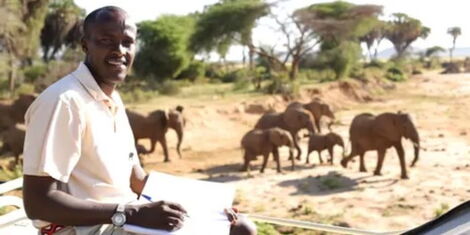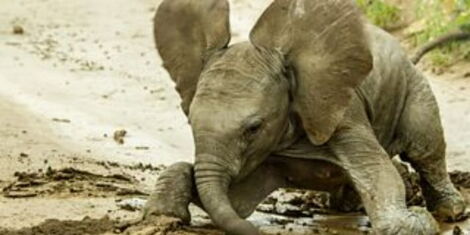David Daballen, a Kenyan employee attached to Save the Elephants orgnisation, recounted how he singlehandedly saved an elephant from drowning in a crocodile-infested river.
In an article published by The Guardian, the Tusk Award for Conversation in Africa 2022 finalist indicated that saving the elephant was the proudest moment of his career.
Born in Samburu, northern Kenya, Daballen’s interaction with elephants started at an early age as he grew up on the Ethiopian border near the elephants’ habitat.

Therefore, as a child, the current Head of Field Operations at Save the Elephants ran the risk of being chased by elephants on his way to school but he always managed to escape unscathed.
That highlight of his career came in May 2009 when a male elephant they had identified in 2008 and named him Rommel returned to the Samburu National Reserve.
“Rommel didn’t come often, but when he did turn up, we’d have to be prepared. He was gigantic and aggressive, weighing about six tonnes,” Daballen recounted.
When the elephant appeared, the conservationists decided that it was Rommel’s turn to be collared and effectively sent three cars that successfully searched for and darted him.
However, after being darted, the gigantic elephant headed in the wrong direction and ended up being stuck in a river after the tranquilizer took effect while he was trying to cross the crocodile-infested Ewaso Nyiro.
“In a split second, I decided to act. I was young and had no family at the time. I jumped in and lifted his heavy, twitching trunk from the water,” he added.
According to the conservationist, the team could not tag the elephant as the collar they had made was too small. So, he had to hold the elephant’s trunk aloft with all his strength, as an antidote to the tranquilizer was delivered.
“I stood there for at least half an hour. I tried hard to keep my cool as my arms became exhausted. Small fish swam past my legs. Each time, panic hit: was this one a crocodile?
Furthermore, Daballen indicated that there was also a risk other elephants might come and cause trouble in the water.
“As soon as his ears started to flap – a sign of consciousness returning – I dropped his trunk and moved to safety. Within a couple of minutes, he was back to business, up and off to chase after females,” he concluded.

Source: kENYANS.CO.KE











